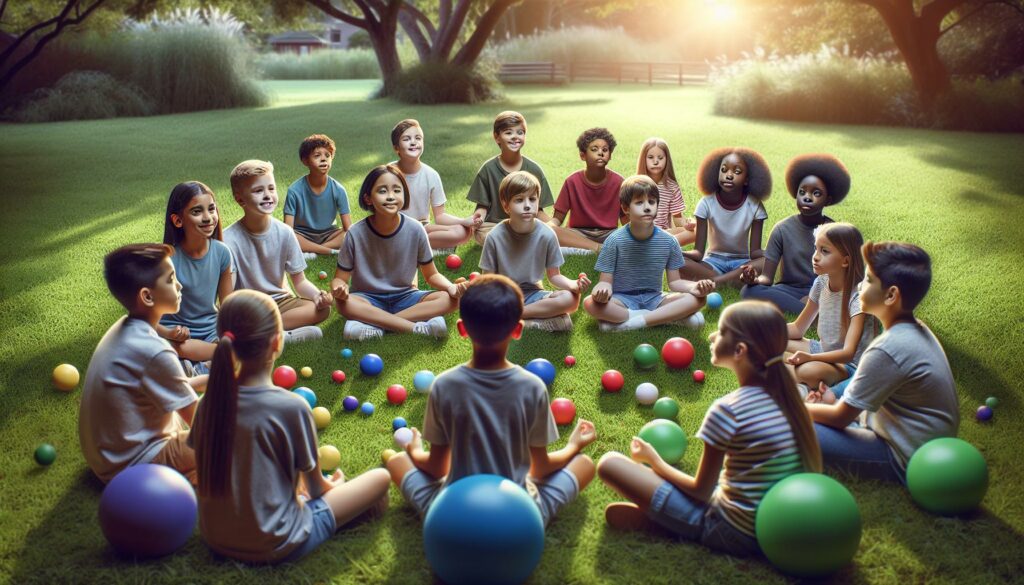In today’s fast-paced world, teaching kids mindfulness can be a game changer. It helps them develop emotional awareness and cope with stress in healthier ways. I’ve found that asking the right questions can spark their curiosity and encourage deeper thinking about their feelings and experiences.
Mindfulness questions for kids are a simple yet effective tool to guide them in exploring their emotions and thoughts. By engaging with these questions, children learn to slow down, reflect, and connect with the present moment. Whether it’s during a calming bedtime routine or a quiet afternoon, these questions can foster meaningful conversations and promote a sense of peace.
Key Takeaways
- Mindfulness Enhances Emotional Awareness: Teaching mindfulness helps children develop emotional intelligence and equips them with coping mechanisms for stress.
- Engagement Through Questions: Asking mindfulness questions encourages kids to explore their thoughts and emotions deeply, fostering self-reflection and present-moment awareness.
- Regular Practice Builds Resilience: Consistent mindfulness exercises improve focus, enhance well-being, and help children navigate challenges with confidence.
- Developing Calming Techniques: Mindfulness practices, such as deep breathing and guided imagery, provide children with practical strategies to manage and reduce overwhelming emotions.
- Promoting Healthy Relationships: Mindfulness nurtures empathy and compassion, enabling children to cultivate stronger connections with others.
- Creating a Mindfulness Routine: Establishing a consistent mindfulness routine, even for short durations, can significantly enhance children’s emotional well-being and self-awareness over time.
Mindfulness Questions for Kids
Mindfulness refers to the practice of focusing on the present moment with full awareness, free from distractions. Incorporating mindfulness into children’s routines fosters emotional intelligence and resilience. Through mindfulness, kids gain tools to acknowledge their feelings, recognize their thoughts, and respond to situations calmly.
Mindfulness exercises help children develop curiosity about their inner experiences. Engaging in activities like deep breathing or observing nature enhances their ability to concentrate and stay present. Simple mindfulness techniques may include silent moments for reflection or guided imagery, which encourage children to visualize peaceful settings.
Mindfulness questions enable kids to delve deeper into their emotions and thoughts. Asking questions such as “What do you see around you right now?” or “How does your body feel?” promotes self-awareness. These inquiries cultivate a non-judgmental attitude towards their experiences, creating space for exploration and understanding.
In moments of stress, mindfulness equips children with practical strategies to cope effectively. They learn to recognize escalating emotions and utilize techniques like deep breathing or body scans to achieve calmness. Implementing mindfulness practices regularly enhances their ability to navigate life’s challenges with confidence and clarity.
Importance Of Mindfulness For Kids
Mindfulness plays a crucial role in children’s development. It enhances emotional awareness and equips kids with essential coping strategies for stress.
Benefits Of Practicing Mindfulness
- Improved Focus: Mindfulness trains kids to concentrate, improving their attention spans for academic tasks and daily activities.
- Enhanced Well-Being: Regular mindfulness practice fosters a sense of peace, reducing anxiety and promoting overall mental health.
- Increased Resilience: Kids learn to handle setbacks and challenges better, developing the ability to bounce back from difficult experiences.
- Strengthened Relationships: Mindfulness nurtures empathy and compassion, helping kids form healthier connections with peers and adults.
- Heightened Self-Awareness: Mindfulness encourages kids to identify their emotions, allowing them to understand feelings more clearly.
- Calm Responses: Practicing mindfulness aids children in reacting calmly to stressful situations rather than responding impulsively.
- Coping Strategies: Mindfulness teaches practical techniques, such as deep breathing, which enable kids to manage and reduce overwhelming emotions.
- Mindful Reflection: Engaging in mindfulness questions promotes reflection on experiences, helping kids process events and emotions constructively.
Engaging Mindfulness Questions For Kids
Mindfulness questions encourage children to explore their thoughts and feelings, fostering greater self-awareness. Here are some engaging question categories that can spark meaningful conversations.
Open-Ended Questions
Open-ended questions stimulate critical thinking and creativity. They invite children to express their feelings in their own words. Consider these examples:
- What does being calm feel like to you?
- How do you see or feel gratitude in your daily life?
- Can you recall a moment today when you felt happy? Describe it.
- What sounds can you hear right now, and how do they make you feel?
- How would you explain mindfulness to a friend?
- What did you learn about yourself during a challenging moment?
- How do you feel before and after practicing mindfulness?
- What is one thing you would change about your day if you could?
- How do you think your feelings affect those around you?
- What makes you feel at peace, and how can you find those moments more often?
Tips For Parents And Educators
Establishing mindfulness practices can effectively enhance children’s emotional well-being. Here are some strategies to implement mindfulness in daily routines.
Creating A Mindfulness Routine
Developing a consistent mindfulness routine proves beneficial for children. Start with short sessions of 5 to 10 minutes each day. Integrate techniques like deep breathing, guided imagery, or simple meditation. Use specific times, such as morning or bedtime, to instill this practice. Incorporating mindfulness into transitions, like before meals or homework, helps children form habits. Encourage them to notice sounds, smells, and sensations during these moments. Gradually increase the duration as they become more comfortable with the practice.
Encouraging Open Dialogue
Promoting open dialogue about mindfulness encourages children to express themselves. Ask open-ended questions that invite reflection. Examples include, “”What makes you feel calm?”” or “”How did you feel today?”” Validate their emotions, reinforcing that all feelings are acceptable. Create a safe space for sharing thoughts, allowing children to explore their emotional experiences freely. Regularly check in about their feelings and thoughts, cultivating opportunities for deeper conversations. Demonstrating active listening builds trust and strengthens connections, enhancing their mindfulness journey.
Mindfulmess in Children
Embracing mindfulness in children’s lives is a powerful way to nurture their emotional growth and resilience. By using mindfulness questions, I can help kids explore their feelings and thoughts in a safe and supportive environment. This practice not only fosters self-awareness but also encourages meaningful conversations that can strengthen our connections.
As I incorporate these questions into daily routines, I’m not just teaching kids to be present—I’m equipping them with essential tools to navigate life’s ups and downs. The journey of mindfulness is ongoing, and with each question, I can guide children toward a deeper understanding of themselves and the world around them. Together, we can cultivate a more mindful and emotionally intelligent future.

